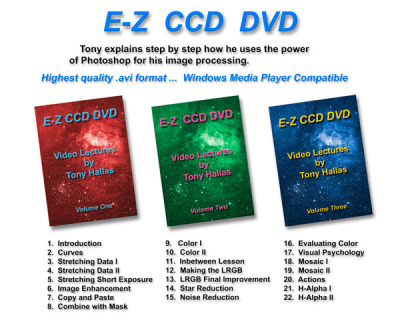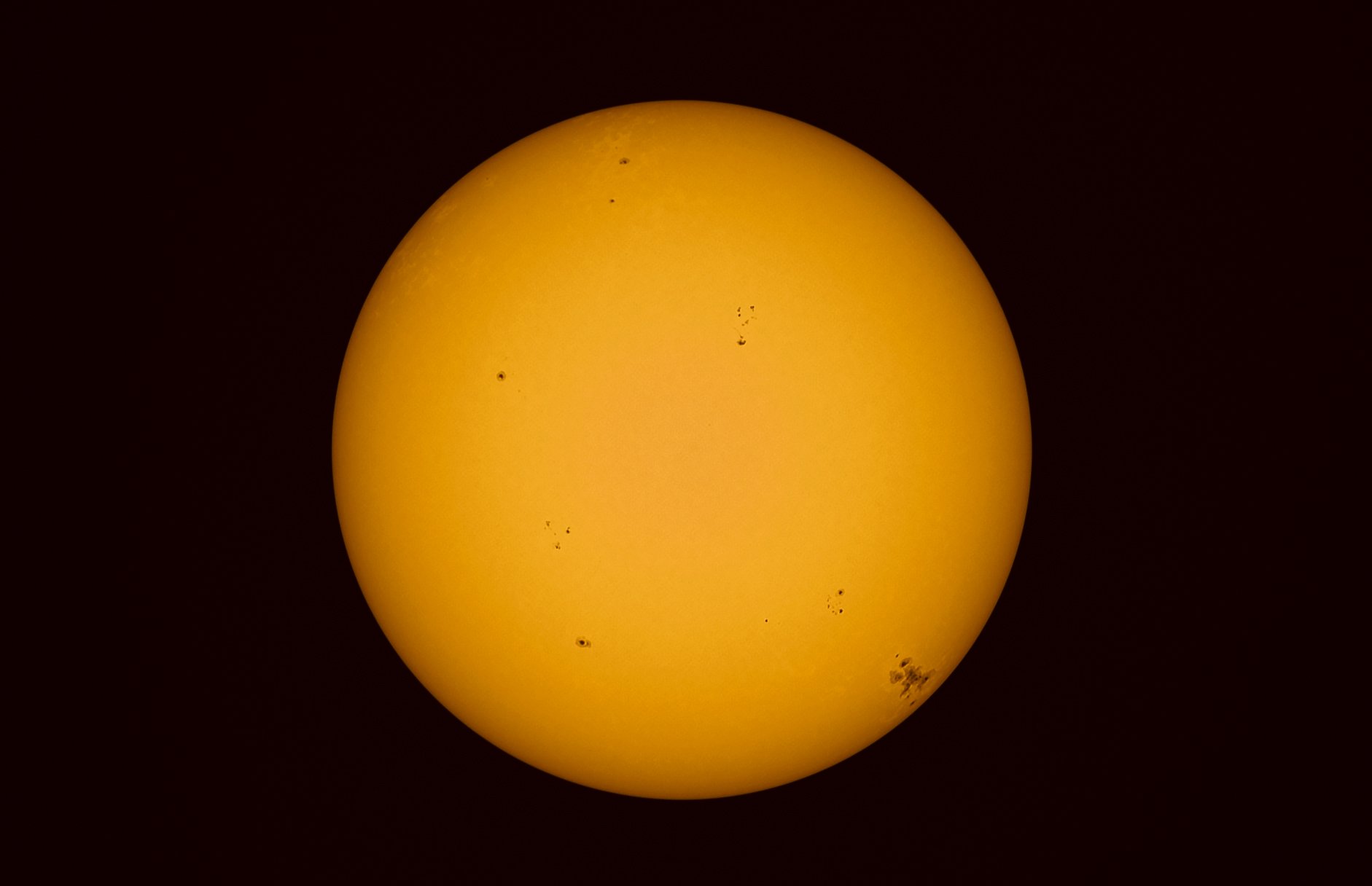Al Nagler discusses his astrophotography endeavors
Al Nagler discusses his astrophotography endeavors from Jeff Ball on Vimeo.
Noted telescope designer Al Nagler discusses his early efforts at astrophotography and current telescope designs aimed at improving imaging performance of his telescopes. A wonderful few minutes spent with one of the industry's icons and a terrific ambassador for the amateur astronomy community. I am sure you will enjoy the discussion and learn a thing or two.
This video is part of a project I am putting together, but felt that Mr. Nagler's presentation stood on its own from an entertainment and information point of view.
I have had an opportunity to image with Televue instruments over the years including the TV85 and TV101. These instruments are capable of taking wonderful astrophotos. The TV101 and TV127 IS systems are particularly noted for their astrophotographic performance. I encourage you to consider Televue for your astrophotography needs, not to mention those unbelievable eyepieces for the visual astronomer!
A very special THANK YOU to Tom Kennedy for his technical assistance on video production!!
Thanks and clear skies.
A new tool for astrophotography enhancement
 EZ CCD DVD by Tony Hallas is a new tool for the astrophotographer to improve their image enhancement skills. I just completed viewing the 3 DVD set and here are the answers to your questions:
EZ CCD DVD by Tony Hallas is a new tool for the astrophotographer to improve their image enhancement skills. I just completed viewing the 3 DVD set and here are the answers to your questions:
- Is it worth the $68? Yes. You have to remember, as much as I have studied Photoshop and processing, I still approach the subject as "unknowable." I always learn something from every course I digest. What I particularly like about this DVD series is that you are basically sitting at Tony's side as he works through M81 processing from post-reduction to final print. You work through stretching of luminance and application of RGB with the utmost attention to detail. This is the definition of Fine Art Photography.
- Will it make my images better? Yes. There were moments when I had the DVD running on my laptop with my M31 open in Photoshop and applied the current lesson to the image. The image was improved by at least 20% through these new approaches. In particular, application of the spunge and high pass filters were most useful for this image.
- Will I learn something? Yes. I have studied with many of the country's top landscape photographers and image enhancement and compositional consideration were a part of those instructions. I still learned many new techniques and more importantly how to apply them at my artistic taste.
- Who is this for? Are your frustrated with your image processing? Do you not know how to effectively use masks and filters to enhance selected parts of your image? Do you have a pretty good understanding of Photoshop, but want to go a bit deeper into the water? Then this DVD set is for you.
The DVDs contain video files of Tony lecturing during his workflow in addition to some lectures on color, visual psychology, mosaic construction, and hydrogen alpha enhancement. The DVDs are focused on enhancing 16 bit fit files converted to TIFF, which is a bit different from my current workflow with RAW converted DSLR images. So my stretching of TIFF data is a bit different than what Tony presents, but after the lecture on stretching, all other techniques are certainly viable for any astrophotographer regardless of how the data was captured.
I had to chuckle on his "green gun" technique as I recall when he introduced that to the old film astrophoto list many years ago. It is still a very viable technique and one that every astrophotographer should be aware of.
What I like most about Tony's presentation is that he is first and foremost an artist with a vision. You may or may not find his final art product to your liking, that is the nature of the beast, but what he does do is share with you what is possible and encourages you to explore those possibilities that match your own artistic voice. That is what is really important, developing your own artistic eye. While it is important to be keenly aware of the enhancement tools at your discretion, ultimately it is your ability as an artist to visually interpret the data and present it in a way that meets your artistic vision and pleases your intended audience.
That is exactly what I like to focus on when working with imagers, finding their own artistic vision and reconciling their work to meet that vision. If you find yourself not satisfied with your work, you know that something is just not right, give me a call and we can discuss some of the ways to find meet your vision through your image optimization approach.
You can purchase the DVD set directly from Tony here or from Astro-Physics here.
Venus Transit 2004 is now on the site
 Venus Transit June 2004One of my most coveted astronomical and landscape moments was in June 2004 when I photographed the unique transit of the Sun by Venus. A transit is where a planet moves in front of the solar disk creating a black dot shadow. These events certainly help put the size of the Sun into perspective. Venus can be seen in this image to the lower right quadrant.
Venus Transit June 2004One of my most coveted astronomical and landscape moments was in June 2004 when I photographed the unique transit of the Sun by Venus. A transit is where a planet moves in front of the solar disk creating a black dot shadow. These events certainly help put the size of the Sun into perspective. Venus can be seen in this image to the lower right quadrant.
A lot of preparation and planning went into the composition. My first objective was to capture the event in the landscape. This meant I had to utilize the natural filters available on Earth. One of these is the marine layer of the oceans. The Atlantic is closest to me and the transit was going to be timed perfectly to occur during sunrise in the eastern U.S. (For even more information on the event, please see my archived webpage detailing the event with site photos.)
The location selected was Myrtle Beach, mainly because I was familiar with the location and I knew the Sun would rise directly over the waters of the Atlantic. The only thing needed was a clear sky and boy did we get one. This is one of my favorite images and I hope you enjoy it, too. More details at the link below.
You may also purchase this print by simply navigating to the "Purchase Fine Art Prints" page and selecting print/mat size and inputing "Venus Transit" in the print title.
Solar viewing at it's best

The Wsp often affords the astronomer terrific views of the sun. Viewing the sun in high resolution requires very special filters and long focal length instruments.
Jim Sweeney had a wonderful solar viewing setup at wsp and was most gracious in sharing the views. High resolution views of the sun reveal intricate details on the surface as well as prominences that stretch out from the solar disk in wispy detail. These views were some of the finest, if not the finest, i have ever had.
Jim was viewing with a .2 angstrom solar sentinel model 3 filter. The more narrow the filter the more detail one can see on the sun. The ångström is often used in the natural sciences for expressing the sizes of atoms, lengths of chemical bonds and the wavelengths of electromagnetic radiation, and in technology for the dimensions of parts of integrated circuits. It is also It is my understanding that many of the most popular commercially available filters can only reach .4 angstroms.
The scope also needs to have a long focal length and large alerture. Jim uses a 7" astro-physics refractor with barlow lenses that effectively yield an f ratio of 22-25.
One of the best benefits in attending a star party is viewing through wonderful instruments that you would not normally get to view through Jim sweeney's solar viewing setup was fantastic and provided views of the sun unlike any I have seen.
An industry icon: Mr. Al Nagler

The astronomical marketplace is certainly a small one compared to other similar discretionary spending hobbies. But within all industries there are icons and founder/owner/optical designer of Televue optics, Al Nagler is one of those.
Televue is known for their excellent portable refractors and wide field eyepieces. Mr. Nagler is possibly the industry expert on eyepiece design. His eyepieces have taken astronomers from a very restricted view through the eyepiece to one that resembles a walk in space. The innovative eyepieces he and his team have designed have revolutionized the visual market and command a premium price.
Mr. Nagler is not only an icon for the amateur astronomer, but he is also an ambassador for the hobby. He is most kind with his time and knowledge to all who seek it. I had a wonderful conversation with him on Monday about his newly tweaked tv127 shown in the photo. The optics are largely unchanged at 660mm focal length, but he has extended the tube to achieve better scope balance as well as added a 10:1 microfocuser to improve fine focus performance. The views through the binoviewer in daylight were very enjoyable. The 127 would certainly make a very effective astrophotography scope being a native f5.2. Pricing for the 127 is over $6000.
Mr. Nagler also educated me on the importance of knowing the field stop for a given eyepiece so that one can make an accurate comparison from one eyepiece to the next on effective field of view. The calculations are available on the Televue website and Televue provides the field stop data for all of their eyepieces. The field stop calculation may also be utilized in photography for calculating the field of view for any given focal length lens and chip combination. Since I am writing this blog mobile while on the trip, I cannot provide links and data as I would like.
Mr. Nagler is an icon in the amateur astronomer industry. His telescope and eyepieces have enhanced the visual astronomer's as well as astrophotgrapher's experience immensely. If you ever have an opportunity to have conversation with him I highly recommend that you do so; I think you might just learn something.
Stay tuned for more info and images from wsp 2010.
Jeff's Blog
Join me on photography journeys from desert landscapes to deep sky wonders.



















